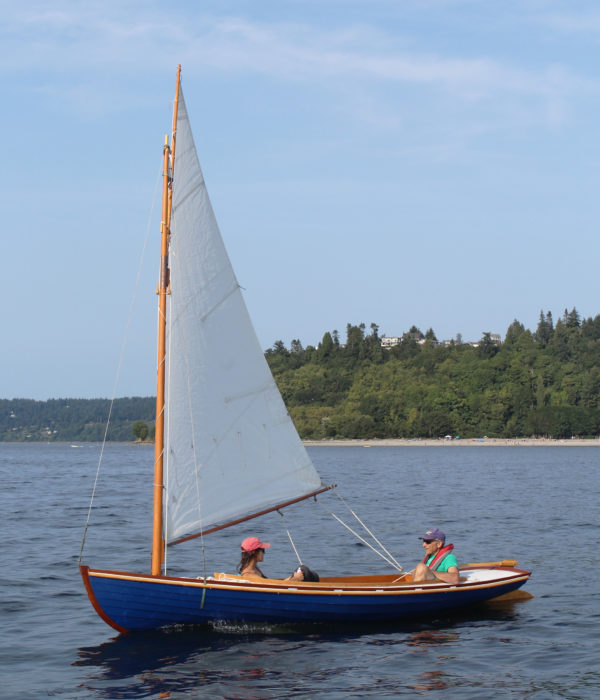 Christopher Cunningham
Christopher CunninghamI once saw LA BELLE OIE sailing away from the Puget Sound launch ramp as I was on my way back, and as always, I altered course to intercept her.
The first time I saw this lovely melonseed skiff was while I was kayaking on Seattle’s Lake Union. It was a couple of hundred yards away, and at that distance, there’s not often much to distinguish one small boat from another, but I was struck by its plucky low profile, understated sheer, and classic gaff rig. I paddled well out of my way to get a closer look and met her builder, Noah Seixas.
Since that first meeting, I’ve seen Noah sailing his melonseed many times—convinced now that there is no boat on the lake that’s prettier—and I always chase him down.
Noah grew up on Long Island and learned to sail in the ’60s aboard his father’s boats on Gardiners Bay, at the island’s eastern extremity. His schooling, which lingered a dozen years beyond a BA to a PhD, and work (he’s a professor of occupational health and safety at the University of Washington and now on the verge of retirement) kept him from devoting his time to boating, but it didn’t erase his fond memories of being on the water.
In the early 1990s, his budding career brought him to Seattle, where Puget Sound rekindled his memories of sailing Gardiners Bay, memories he shared with his ’tween daughter, Isabel, too often, evidently. “Dad,” she said, “stop talking about boats and build one.”
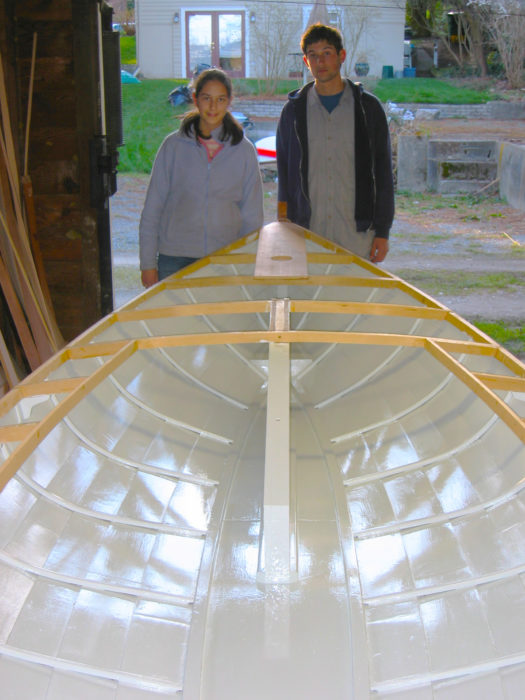 Noah Seixas
Noah SeixasYoung Isabel and Gus pose with the hull with the garage door open. The foredeck’s longest deck beams are supported by the centerboard trunk.
Noah started looking at boats with an eye toward building one, and the Wooden Boat Festival at Port Townsend offered many possibilities to consider. The boat that caught his eye was a melonseed skiff. The type was developed in the 1880s for waterfowl hunting in the bays of New Jersey. It was an improvement over its predecessor, the sneakbox, and could extend the hunting grounds from the marshes and mud flats to open water where the vertical bow could slip through the chop without taking water over the foredeck as the spoon-bowed sneakbox did. The drier ride makes the melonseed well suited to sailing for pleasure.
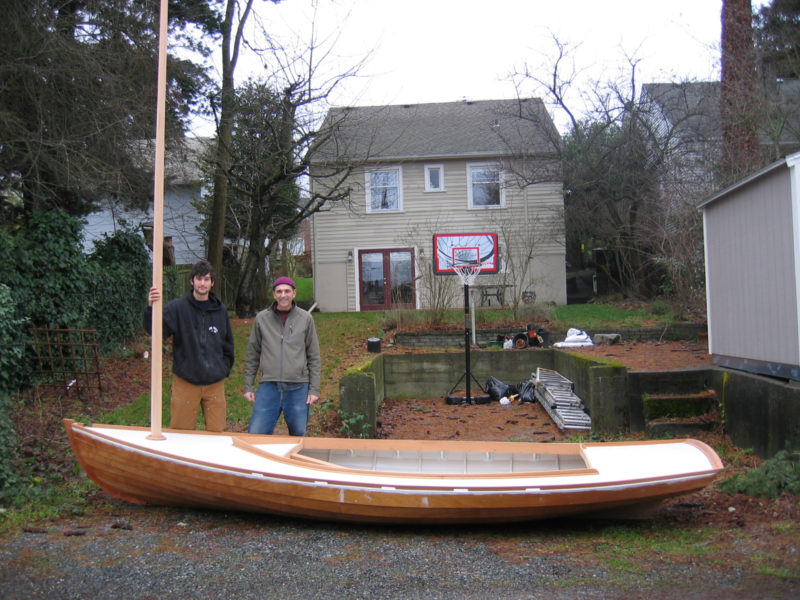 courtesy of Noah Seixas
courtesy of Noah SeixasWith the skiff in its finishing stages, Gus (left) and Noah set it in the alley, across from the garage shop.
Noah purchased plans from The WoodenBoat Store for Marc Barto’s 16′ adaptation of the 1888 New Jersey melonseed gunning skiff documented in Howard Chapelle’s American Small Sailing Craft. Chapelle notes that the melonseeds built for hunting were carvel-planked, believing that lapstrake hulls were too noisy for approaching skittish waterfowl. Barto’s glued-lap plywood construction suited Noah just fine. He remembered all too well the annual summer chore of having to caulk, soak, and bail the family’s old carvel boats before they were ready for the sailing season. His father ultimately switched to a 20′ leak-free, cold-molded mahogany daysailer. It was in that leak-free boat, THE GOOD TERN, that Noah was infused with an affection for the beauty of varnish and the lapping of waves against a wooden hull, a soothing sound when the water isn’t seeping into it.
The plans for the Barto melonseed include full-sized patterns, often an indication of a project suitable for a beginner, but the build is an intermediate to advanced challenge. Noah’s most ambitious project before the melonseed was a Bevin’s Skiff, built from a kit, and while his home shop was equipped with the tools he needed for simple woodworking, he had to borrow a bandsaw and a thickness planer to do all the tasks the melonseed required. Fitting the boatbuilding in between work and home life, he could work only a couple of hours at a time on evenings and weekends. While his progress was slow, it was steady and he found the work engaging. “I was always looking forward to the next step,” he recalls. “In fact, I often would lie awake at night thinking about the next step, what I needed to do to make it all go together.” The project stretched out over four years, and the care he put into the work is evident. The boat looks as good up close as it does from a distance.
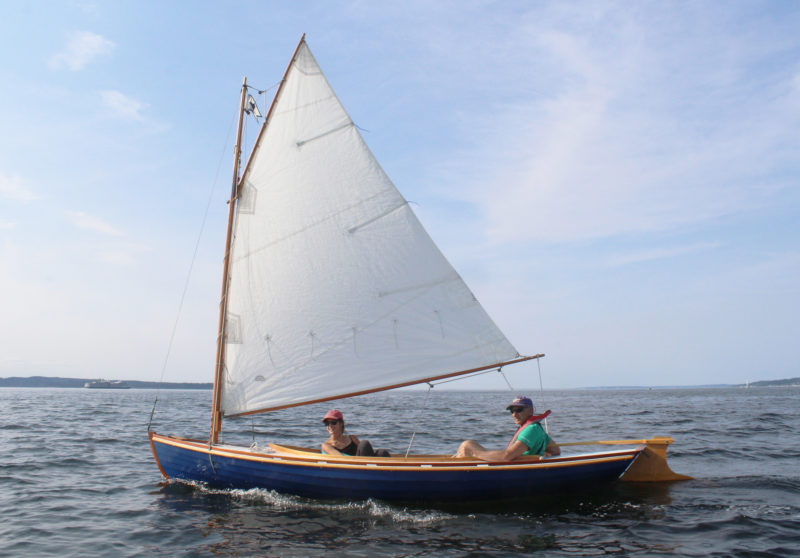 Christopher Cunningham
Christopher CunninghamMaking good speed in light air with a grown-up Isabel and Noah aboard, the melonseed shows the profile that draws me in no matter how far away I am when I spot it.
He christened his melonseed LA BELLE OIE, French for “the pretty goose.” It doesn’t have any special significance in French, or even in English. It’s a family homophonic joke. His daughter, Isabel, “is-a-Belle,” and his son, Gus, is the sound-alike goose.
Almost every time I get in touch with Noah, I ask him if he has put oarlocks on LA BELLE OIE. The Barto plans didn’t include details for oarlocks, but Chapelle’s drawing showed tholepins. I think the melonseed would make a fine rowing boat. I built a sneakbox to follow the route Nathaniel Bishop followed from 1875 to 1876 and wrote about in his book, Four Months in a Sneak-Box. My sneakbox rowed well on the Ohio and Lower Mississippi rivers, but on the open waters of the Gulf of Mexico it made for some miserable pulls to windward with the bow slapping against the chop. I had many occasions to wish Bishop’s book was Four Months in a Melonseed. Later, I had even started building a Barto 16′ melonseed to make up for Bishop’s lapse in judgment. I got the molds set up but then stalled and abandoned the project. I’ve been hoping Noah would make LA BELLE OIE rowable so I could recover a bit of my discarded dream.
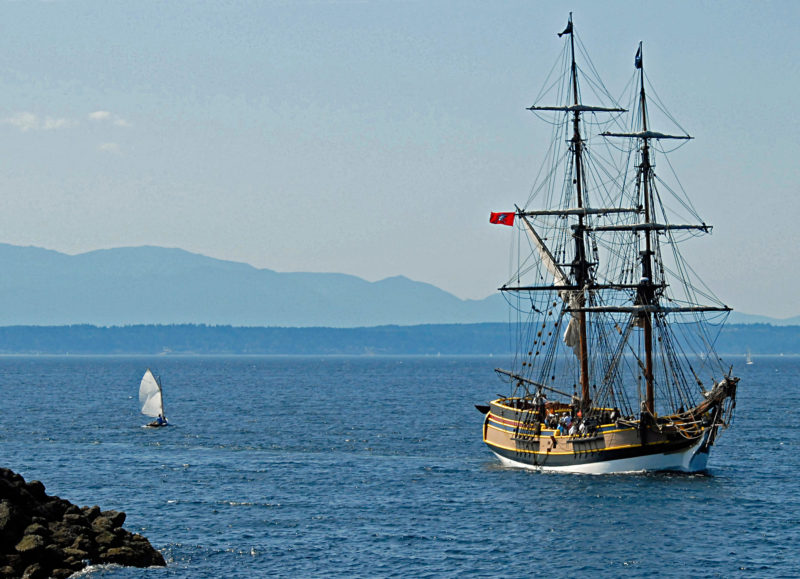 courtesy of Noah Seixas
courtesy of Noah SeixasDwarfed by the brig LADY WASHINGTON, a replica of a Revolutionary War ship, LA BELLE OIE heads out on Puget Sound.
Noah too is an avid rower but said, “The addition of oarlocks, while it would seem useful, is pretty elusive given the lack of a thwart, and the presence of the boom and gaff. A loose-footed sail, or lug rig might better accommodate a rowing station.” Thwarts were not installed in the original hunting sneakboxes either, and seating was provided by a box that could be moved out of the way when the hunter needed to hide by lying down in the cockpit. I suspect the early melonseeds had a similar arrangement, with easily removed seating. As for the boom, a topping lift would get it out of the way for rowing while the rig is up.
 courtesy of Noah Seixas
courtesy of Noah SeixasThis is how I often find Noah and LA BELLE OIE, sailing solo on Lake Union. Seattle’s Center for Wooden Boats is just above the melonseed’s bow.
Whatever the practical issues there are with rigging LA BELLE OIE for rowing, I suspect I know why Noah hasn’t gone to the trouble of installing oarlocks and making a set of oars. When I see him sailing his melonseed, he is the picture of contentment, even when there’s only a whisper of wind. There’s not a good word for what I see in him when he’s aboard LA BELLE OIE, but there’s an apt expression in German: wunschlos glücklich—wishlessly happy.![]()
Christopher Cunningham is the editor of Small Boats Magazine.
Do you have a boat with an interesting story? Please email us. We’d like to hear about it and share it with other Small Boats Magazine readers.
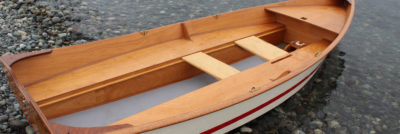

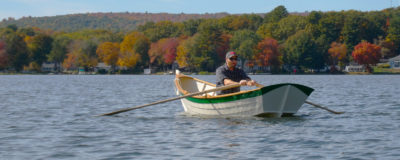
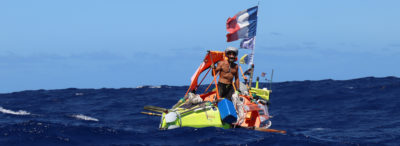
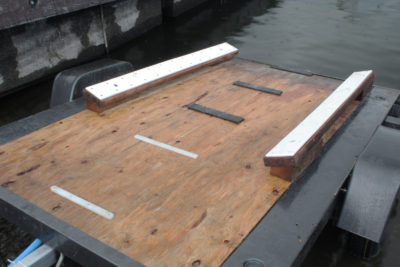
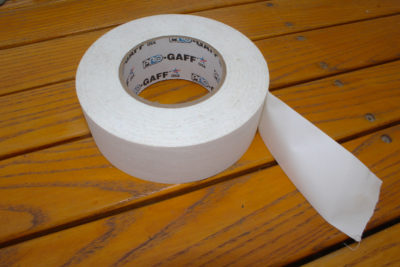
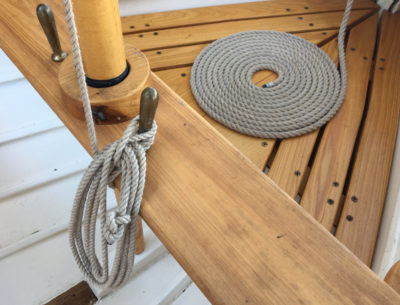
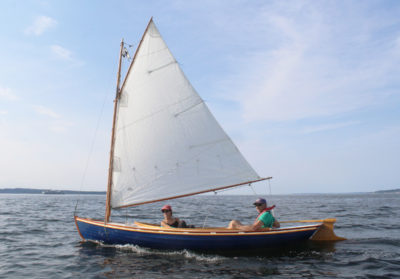
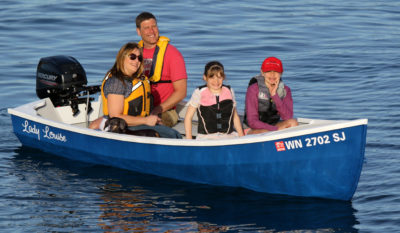
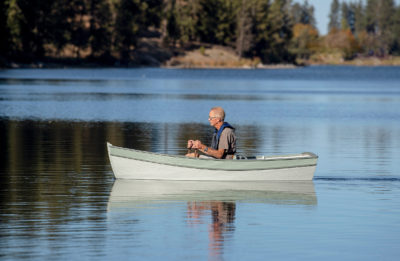
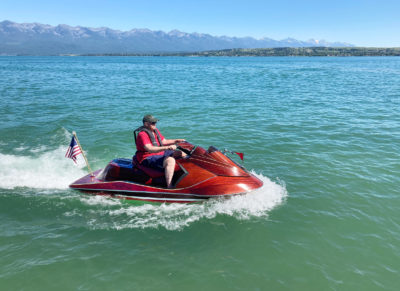
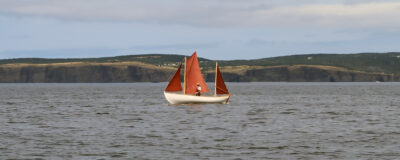
The melonseed is a beautiful design and was long a contender for my own first build, until a slightly larger design caught my eye. Noah has done a splendid job in the execution of LA BELLE OIE. I hope EMILY RUTH and I can sail in her company some day.
That is a lovely article about a beautiful boat. The last photo shows her off to her very best,just breathtaking. Well done Noah she is a delight and thanks to Chris for bringing her to our attention.
Having grown up in southern New Jersey, it is a shame that these lovely boats are rarely seen on our skinny waters. The few I have come in contact with are all like Noah’s: lovely to look at and a sail easily in all wind and waters. While I can see the wish for oars from the author, I can also see why a Melonseed has no need, they are simply the perfect little boat
Lovely, Noah. A treasure! The lines are beautiful; clean and simple with a sleek profile, low to waterline, and bow and stern that slice gently through the cradling sea.
If Noah had happened to sail the Great South Bay of Long Island, he would have bumped into the Seaford Skiffs there. Very, very similar to melonseeds. They had oarlocks and a small bench to sit on. Because the sail used a sprit, it was easy to just roll the sail, sprit and boom up around the mast and start rowing. Mystic has a number of examples including my sister’s old one. They still are the best boats to teach kids on and let them sail and play in them for hours. Great job, Noah. Enjoy.
Noah! What a nice way to see you (and Isabelle and Gus) again after all these years. This is what I should be doing instead of struggling with decisions about repairing my old Folkboat. Beautiful job. Maybe we can sail together some day.